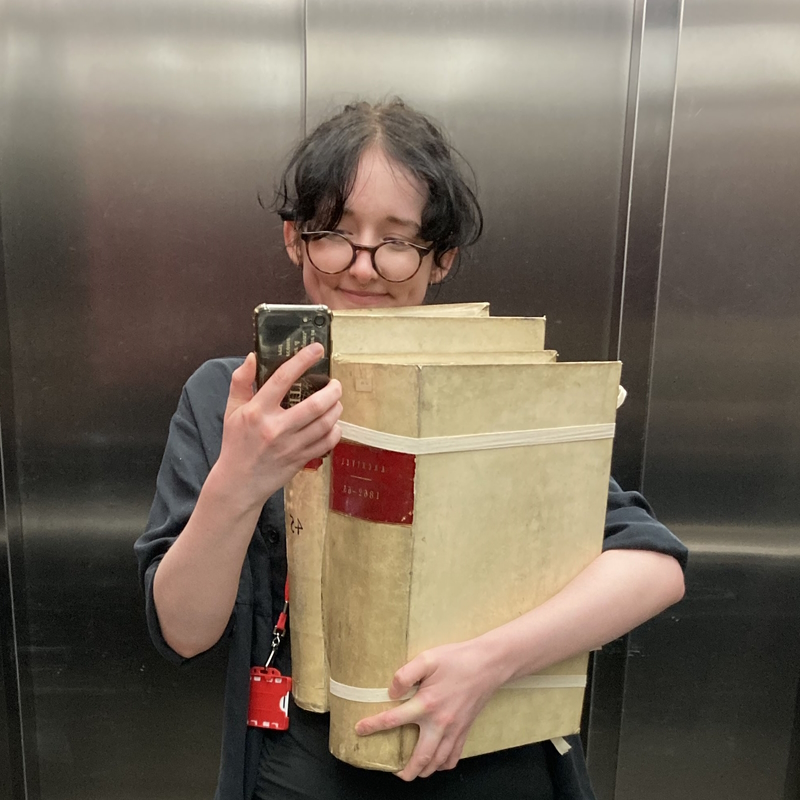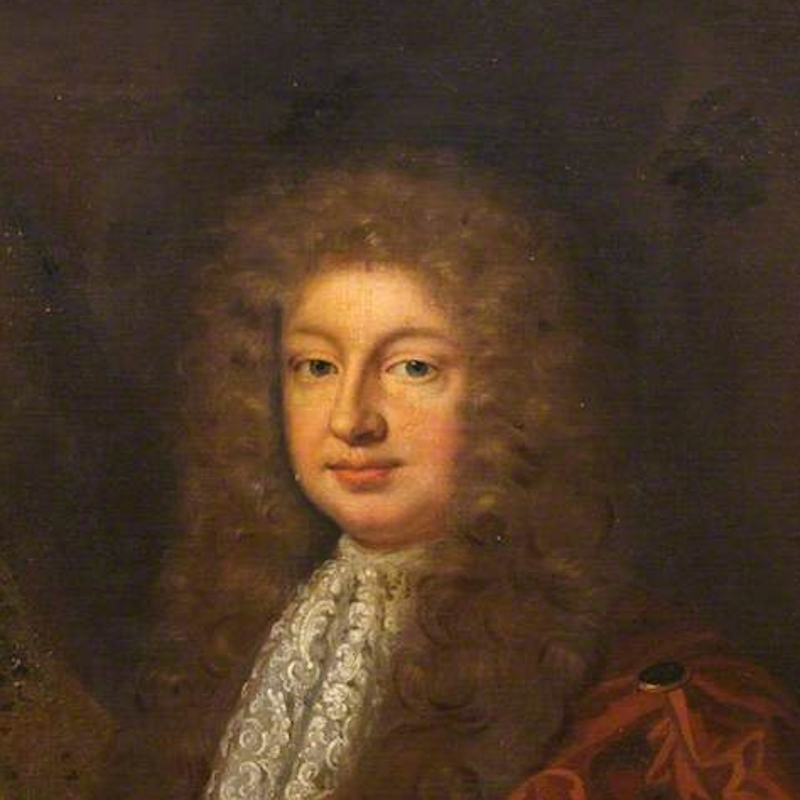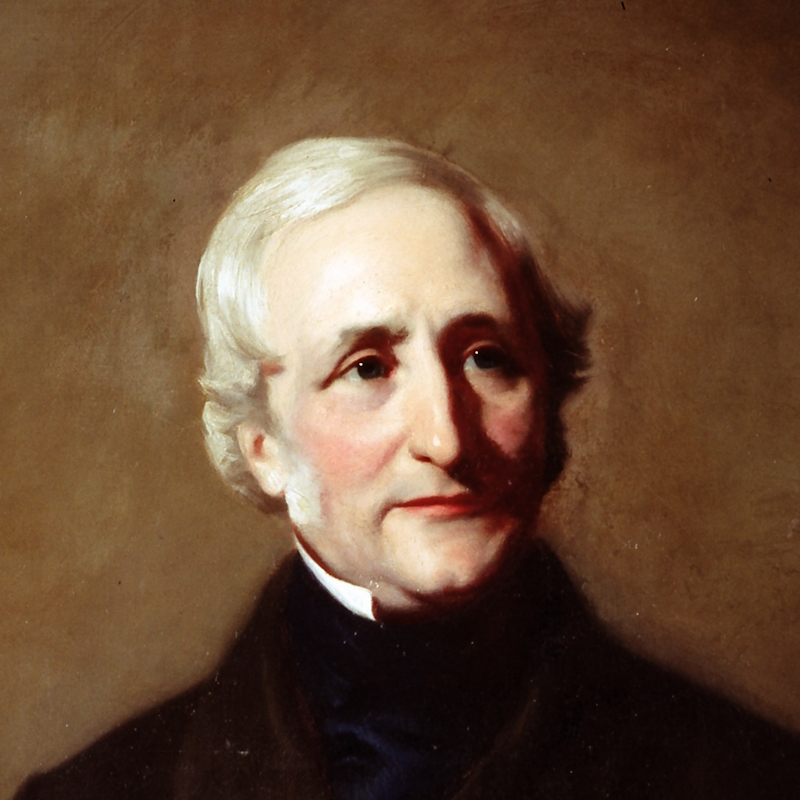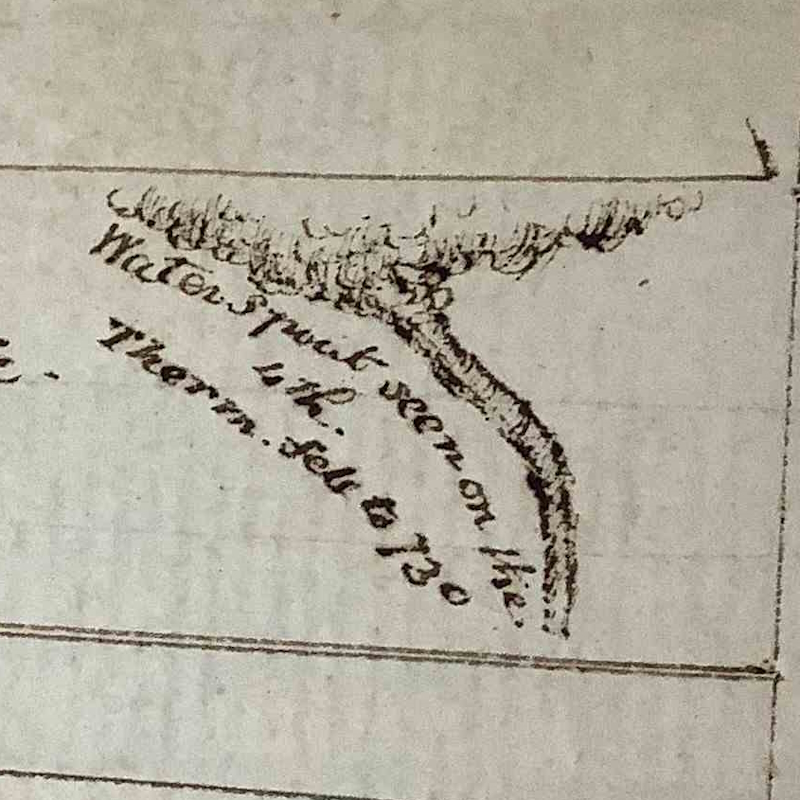Layla Hilsden finds 'an astonishing and noteworthy story' while cataloguing the Royal Society's Classified Papers collection.
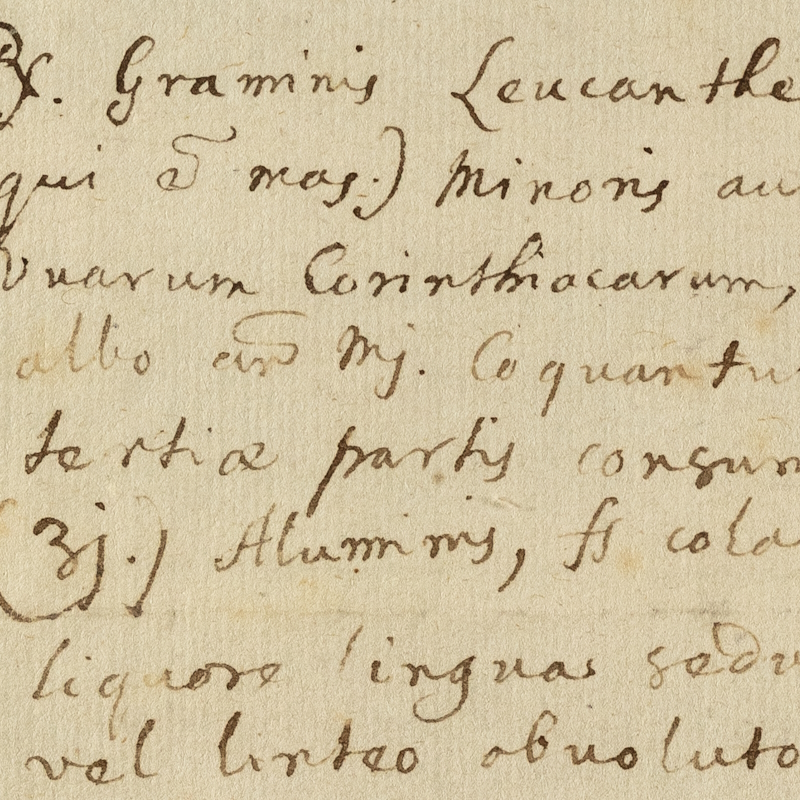
Cataloguing early modern science papers raises some unique challenges. As well as deciphering handwriting and trying to get my head around the theories of seventeenth-century natural philosophers, there’s a lot of research involved in assessing the veracity of their claims. For my efforts I get to learn about weird science history all day, which seems like a fair trade-off to me.
Lately I’ve been cataloguing the Classified Papers collection, which contains surely some of the most curious manuscripts in the Royal Society’s archival holdings. With papers pre-dating the grant of the First Charter to the Society in 1662 and continuing into the early 1740s, the collection is a fascinating resource for tracing the development of modern Western science from the later years of the Scientific Revolution to the European Enlightenment. Alongside natural philosophy, medicine and the emerging sciences, topics ranging from cheesemaking to antiquities and numismatics were investigated. This breadth of themes, combined with the frequent use of Latin, means that there’s a lot of careful interpretation to be done as a cataloguer to describe these manuscripts in a meaningful way, as well as endless surprising stories to uncover.
One such story comes via Théodore de Mayerne’s ‘Historia mirabilis et notandae’ (CLP/14i/1), which I’ve interpreted in our catalogue as ‘An astonishing and noteworthy story’, and which was likely produced in the first half of the seventeenth century while Mayerne was working in London as a physician to King Charles I. ‘Mirabilis’ might more commonly be translated as ‘wonderful’ or ‘miraculous’, but I’m afraid there’s nothing wonderful in today’s parlance about the tale that Mayerne relays below:
Upon inspecting this ‘miraculous’ manuscript, I was dismayed to find a note in the upper left corner of the page which reads ‘Vermes in lingua & gingivis’, or ‘worms in tongue and gums’. The gruesome case study reported to Mayerne involved the extraction of small, white worms from the mouth of a woman in London. Mayerne described how these worms, emerging from the teeth and gums, aroused ‘the most excruciating pain, considered by the afflicted to be equal to no [known] tortures’ (dolores atrocissimos quibus nullis cruciatus pares censentur ab afflictis).

The worms were dug out of the patient’s gums and tongue with a sharp quill or needle, and a rather poetic description is given of the worms involving a reference to the ‘inverted leaves of the waterlily’ (foliis inversis Nenupharis). The manuscript concludes with a tooth-worm remedy which mixes white wine and alum, to be applied to the tongue of the afflicted:
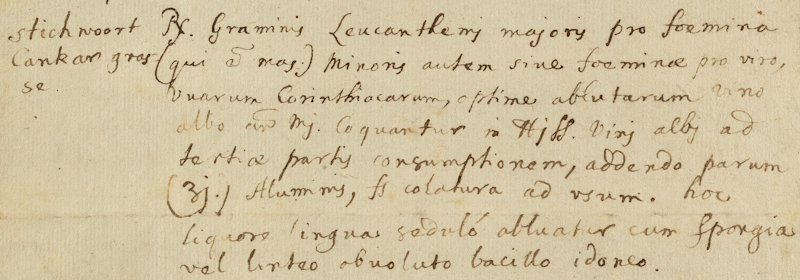
If you’re left a little disturbed by Mayerne’s story, don’t fret – I’m relieved to inform you that the tooth-worm is nothing more than a medical myth, though it has reared its head throughout history all the way back to Sumerian and Assyrian cuneiform tablets. The early Medieval Lacnunga, a folk medicine miscellany dating to the late tenth century, compiled tooth-worm remedies, while Medieval physician Gilbertus Anglicus (c. 1180 – c. 1250) attributed toothache to ‘sum worme’ in his Compendium medicinae, linking tooth-worms to humoral theory.
I could find few references to tooth-worms in the Royal Society’s catalogued collections – by the Enlightenment, as modern dentistry developed, stories of tooth-worms were more widely recognised as superstition. The references I identified all date to the latter half of the seventeenth century, and they make for rather interesting reading:
Of note is this correspondence from Hans Sloane to the Royal Society, dated 4 July 1700, regarding specimens of alleged tooth-worms. The letter begins, somewhat worryingly, with: ‘In the enclosed silk you will find some worms which are now alive they were sent me by one Mr. Chamberlain who thinks they came from his teeth.’ The Society opted not to retain Chamberlain’s ‘worms’ for its archives, but reading a little further I could hazard a guess as to their origins.
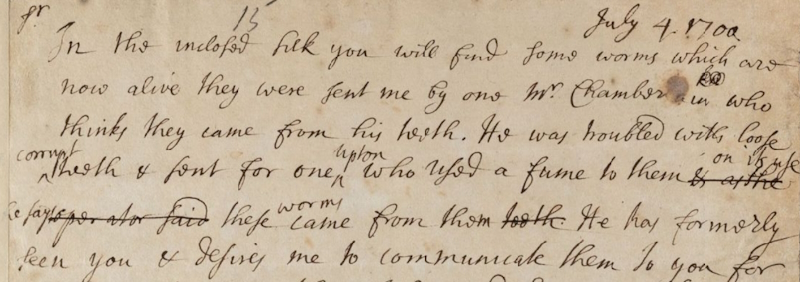
Sloane remarks of Chamberlain that ‘He was troubled with loose corrupt teeth & sent for one Upton who used a fume to them & on its use he say’d these worms came from them.’
One popular remedy for toothache and cavities, recorded around 48 CE by Roman physician Scribonius Largus in his De compositione medicamentorum liber, was fumigation of the mouth with smoked henbane seeds. This fumigation and subsequent rinsing of the mouth would produce thread-like white ‘worms’…which were most likely ash from the burning seeds.
Another plausible explanation for tooth-worms could be the misidentification of the nerves and inner structures of the teeth themselves, which would explain the excruciatingly painful extraction described in Mayerne’s second-hand account. But none of this explains Sloane’s claim that Chamberlain’s worms were alive.
To address this, we can look to Antoni van Leeuwenhoek’s response to Sloane’s letter (LBO/12/87), dated 27 July 1700. Leeuwenhoek confirmed that one of the received ‘worms’ was alive while two died in transit, and after studying them under the microscope identified them as the mites of the cheese fly.
He suggested that perhaps Chamberlain had recently eaten ‘cheese laden with young worms or the eggs of the above-mentioned flies’ and that the mites had remained in his mouth from his meal. Off-putting, but much less terrifying that the idea of malevolent worms growing from the gums. Leeuwenhoek rejected the notion that any ‘worms’ could have originated organically from Chamberlain’s mouth, using his observations of the lifecycles of maggots and flies to justify this.
In his original letter, Sloane noted that ‘It is one of the hardest matters in natural philosophy to give an account of the generation & [origin] of these kind of living creatures that are found alive in human bodies and other animal bodies.’ We have microscopists like Leeuwenhoek to thank for advancing the field of microbiology and separating fact from myth.
If, like me, you’re grateful to Leeuwenhoek for his part in quashing tall tales of tooth-worms once and for all, you might be interested in coming along to our international Leeuwenhoek conference in September.

